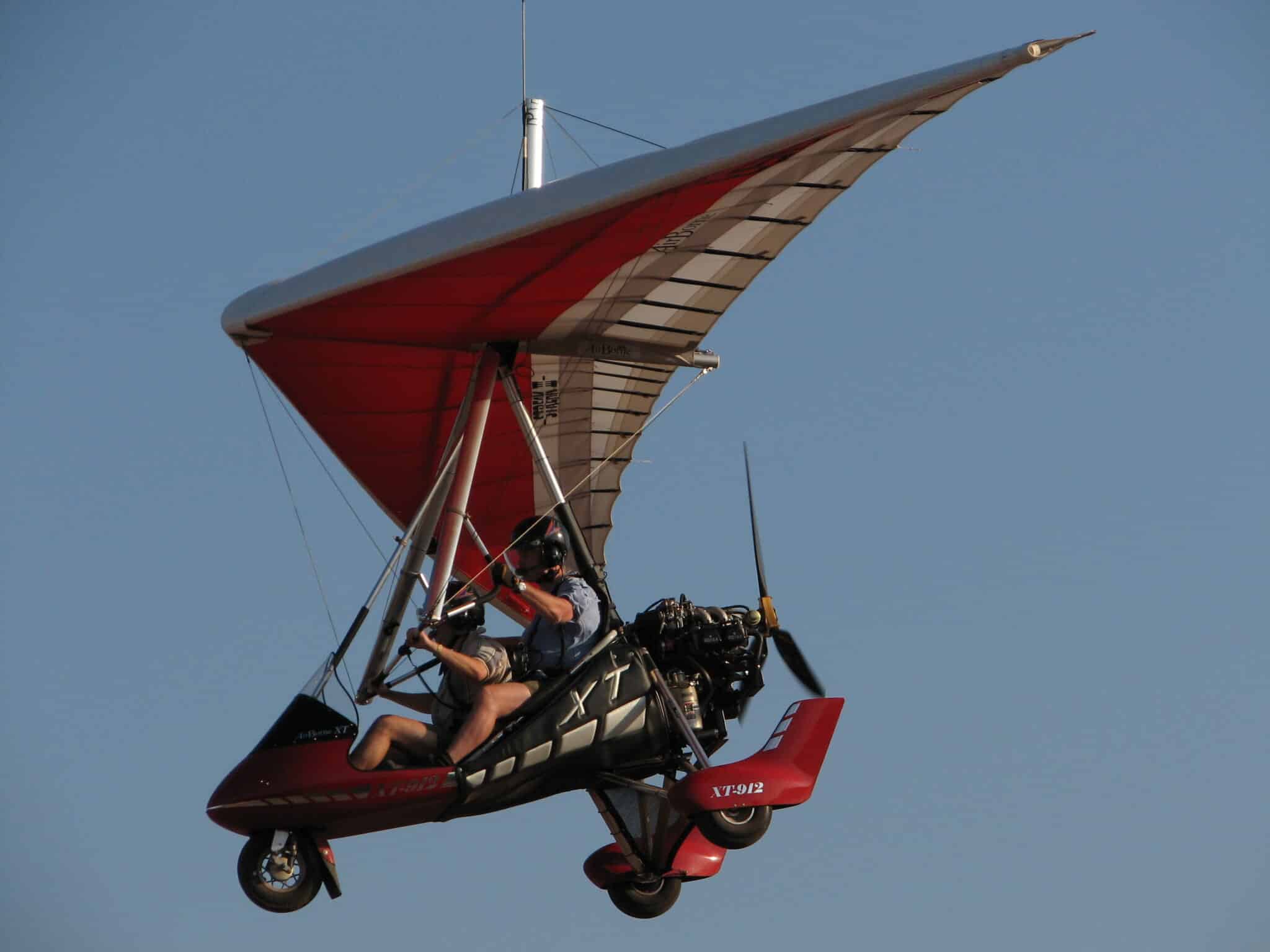About Hang Gliders
- A hang glider is a type of aircraft that uses air currents to stay aloft.
- Unlike other aircraft, hang gliders have no engine or propeller.
- Instead, they rely on the wind to keep them in the air.
- How does it work?
- o Since a hang glider is unpowered, it can’t take off from low ground. It has to be launched from somewhere high like a hill or mountain.
- Gravity is the main force on a hang glider. This is the weight of the pilot and the wing.
- The weight produces the thrust that keeps the aerofoil moving through the air.
- The aerofoil shape of the wing stops the hang glider from dropping like a stone. It produces lift.
- The aerofoil forces the air flowing over the top of the wing to travel faster, thereby ‘stretching’ it to produce a low-pressure area.
- Meanwhile, the downward and forward motion of the wing compresses the air flowing under the wing.
- The aerofoil is then drawn up into the area of low pressure, producing lift.
- During the flight, the pilot controls the aircraft by the trapeze, both to change the direction and to vary the speed.
- Powered Hang Gliders:
- A powered hang glider is an aircraft that combines the features of a traditional hang glider with that of a powered aircraft.
- They typically have a small engine attached to the frame, which allows the pilot to take off and stay in the air without having to rely on thermals or other weather conditions.
- This can make them a good option for anyone that isn’t experienced enough to take advantage of the winds to stay in the air.
DGCA Regulations on Powered Hang Gliders
- No individual is permitted to operate a powered hang glider without prior authorization from a DGCA-approved examiner or instructor.
- The qualified examiner or instructor must have a minimum of 50 hours of experience on powered hang gliders, including at least 10 hours on a dual machine.
- Furthermore, the approved examiner or instructor is responsible for conducting thorough checks and authorizing other individuals for flight.
- Individuals must meet specific criteria before conducting test flights on a powered hang glider. This includes holding a valid Commercial Pilot License (CPL) with at least 25 hours of flying experience on a powered hang glider.
- Alternatively, an individual must possess authorization along with 50 hours of flying experience on a powered hang glider, as stipulated in the revised regulations.
- DGCA has mandated that any transaction involving the sale or transfer of a powered hang glider must be accompanied by a certificate issued by the DGCA. This certificate will only be granted following a thorough background check of prospective buyers conducted by the Ministry of Home Affairs (MHA).
- No owner or operator is allowed to lease, rent, or lend a powered hang glider to any individual or entity.
- The use of any remote sensing equipment, weapons, or photography and video recording devices on a powered hang glider is strictly prohibited without explicit permission from the MHA, unless it is deemed necessary for the safe operation of the aircraft or as specified by the relevant guidelines.
- Security measures approved by the Bureau of Civil Aviation Security (BCAS) shall be adopted at the place of parking as well as at the place of operation before each flight by the owner or operator.
Q1) What is the Directorate General of Civil Aviation (DGCA)?
It is the regulatory body in the field of Civil Aviation, primarily dealing with safety issues. It is responsible for regulation of air transport services to/from/within India and for enforcement of civil air regulations, air safety, and airworthiness standards. The DGCA also coordinates all regulatory functions with the International Civil Aviation Organisation (ICAO). The headquarters are located in New Delhi with regional offices in various parts of India.
Source: DGCA issues new guidelines for powered hang gliders for enhanced safety, check details
Last updated on December, 2025
→ Check out the latest UPSC Syllabus 2026 here.
→ Join Vajiram & Ravi’s Interview Guidance Programme for expert help to crack your final UPSC stage.
→ UPSC Mains Result 2025 is now out.
→ UPSC Notification 2026 is scheduled to be released on January 14, 2026.
→ UPSC Calendar 2026 is released on 15th May, 2025.
→ The UPSC Vacancy 2025 were released 1129, out of which 979 were for UPSC CSE and remaining 150 are for UPSC IFoS.
→ UPSC Prelims 2026 will be conducted on 24th May, 2026 & UPSC Mains 2026 will be conducted on 21st August 2026.
→ The UPSC Selection Process is of 3 stages-Prelims, Mains and Interview.
→ UPSC Result 2024 is released with latest UPSC Marksheet 2024. Check Now!
→ UPSC Prelims Result 2025 is out now for the CSE held on 25 May 2025.
→ UPSC Toppers List 2024 is released now. Shakti Dubey is UPSC AIR 1 2024 Topper.
→ UPSC Prelims Question Paper 2025 and Unofficial Prelims Answer Key 2025 are available now.
→ UPSC Mains Question Paper 2025 is out for Essay, GS 1, 2, 3 & GS 4.
→ UPSC Mains Indian Language Question Paper 2025 is now out.
→ UPSC Mains Optional Question Paper 2025 is now out.
→ Also check Best IAS Coaching in Delhi

















